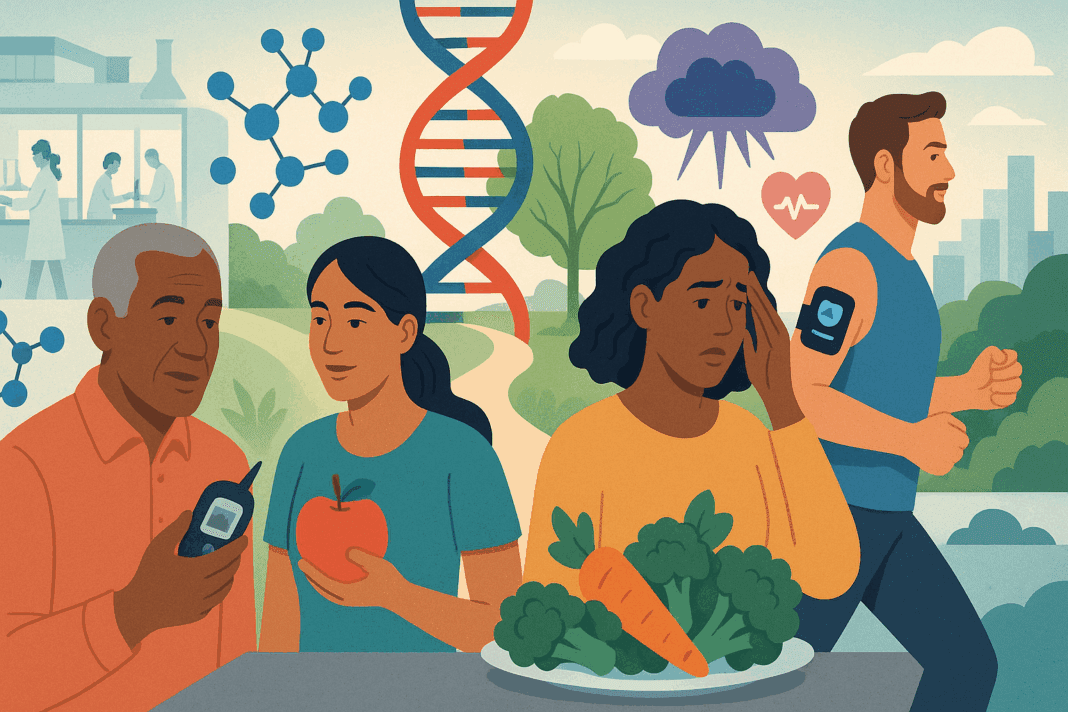Understanding Diabetes Through the Lens of Scientific Discovery
Diabetes is far more than just a condition involving blood sugar. It’s a complex metabolic disorder that affects millions globally and presents in multiple forms, each with distinct causes, treatments, and risks. Despite increasing awareness, misinformation and outdated assumptions persist. In light of emerging research, this article explores 10 science-backed facts that challenge conventional wisdom and provide deeper insight into diabetes care, from prevention to the latest in alternative therapies. For those seeking accurate and compelling diabetes info, what follows delivers an in-depth look at the realities of this condition, separating fact from myth with the latest scientific evidence.
You may also like: Breakthroughs in Current Diabetes Research: What the Latest Studies Reveal About Treatment and Prevention
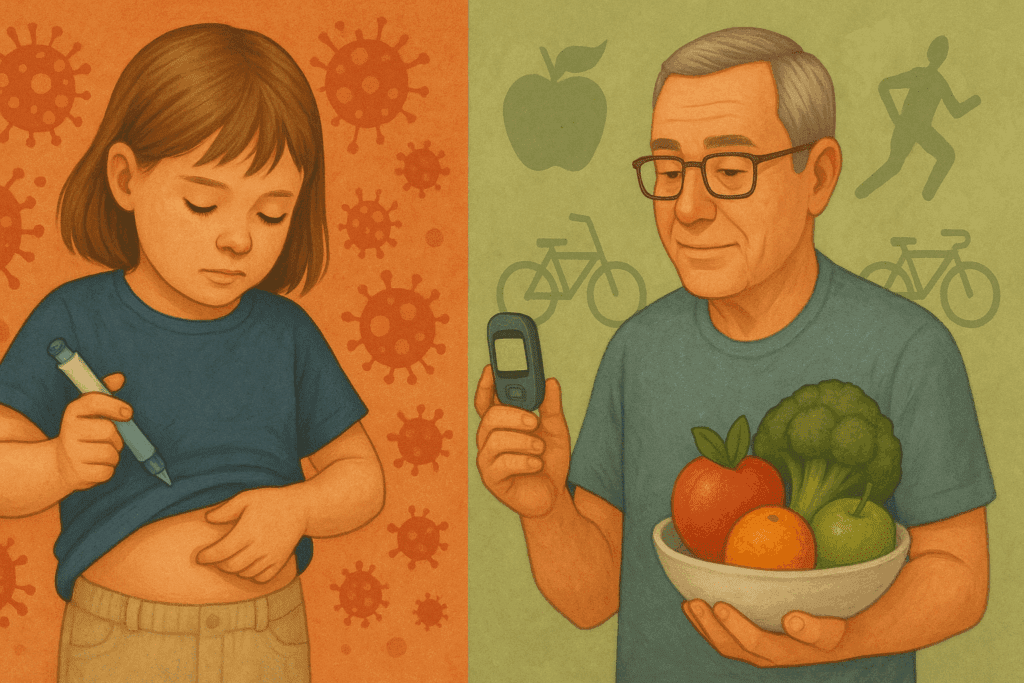
Diabetes Is Not a One-Size-Fits-All Disease
While the public often lumps all forms of diabetes into one category, science has revealed significant differences between type 1 and type 2 diabetes. Type 1 diabetes is an autoimmune condition in which the body’s immune system attacks insulin-producing beta cells in the pancreas. It typically presents in childhood or adolescence and is not linked to lifestyle. Conversely, type 2 diabetes is often associated with insulin resistance and tends to develop later in life, commonly influenced by genetics, diet, and physical activity. Researchers now recognize that even within type 2 diabetes, there are subtypes—some dominated by insulin resistance, others by beta-cell failure. Understanding these distinctions is critical for tailored treatment approaches. As more studies illuminate these differences, it becomes evident that effective diabetes management must go beyond generic recommendations.
Genetics Load the Gun, but Environment Pulls the Trigger
Although there is a genetic predisposition to both type 1 and type 2 diabetes, genes alone rarely dictate one’s fate. The concept that “genetics load the gun, but environment pulls the trigger” is supported by studies on identical twins, where one twin may develop type 2 diabetes while the other does not, despite sharing identical DNA. Epigenetic modifications—changes in gene expression influenced by diet, physical activity, and stress—play a major role in determining who eventually manifests the disease. Recent findings suggest that individuals can dramatically reduce their risk through lifestyle changes, even with a family history of diabetes. This reinforces the importance of environmental and behavioral factors in disease prevention and underscores why diabetes info must address modifiable risk factors alongside genetic awareness.
Insulin Resistance Often Precedes Diagnosis by Years
One of the most interesting facts about diabetes is that it doesn’t begin the day a diagnosis is made. In fact, insulin resistance—the hallmark of type 2 diabetes—often develops many years before blood sugar levels cross the diagnostic threshold. During this time, the pancreas works overtime to produce extra insulin, temporarily maintaining normal glucose levels. Over time, however, this compensatory mechanism fails. This hidden progression explains why many individuals already have complications at the time of diagnosis. Regular screenings and early interventions, particularly for those at high risk, can delay or even prevent full-blown diabetes. Understanding this silent trajectory is essential to empowering individuals to act before it’s too late.
Type 1 Diabetes Isn’t Always Diagnosed in Children
Contrary to the outdated belief that type 1 diabetes only affects children, recent data confirms that a significant proportion of new diagnoses occur in adults. This phenomenon, sometimes referred to as latent autoimmune diabetes in adults (LADA), often presents more subtly and can initially be misdiagnosed as type 2 diabetes. This misclassification delays proper treatment and can worsen outcomes. Adults with LADA may still produce insulin in small amounts, leading to a slower onset of symptoms. However, they still require insulin therapy over time. Recognizing that type 1 diabetes has no age limit is vital for accurate diagnosis and effective care. This nuance challenges one-size-fits-all assumptions and reflects the evolving complexity of diabetes care.

Weight Loss Can Reverse Type 2 Diabetes in Some Cases
Emerging evidence has shown that significant weight loss can lead to remission of type 2 diabetes in some individuals. In particular, the DiRECT trial in the UK found that participants who lost at least 15 kilograms through a structured low-calorie diet experienced remission of their diabetes without medications. This has sparked renewed interest in lifestyle-first approaches and calls into question the belief that type 2 diabetes is always progressive. While not everyone achieves remission, this finding has transformed how we view the disease. It reinforces the role of early intervention and comprehensive lifestyle changes, offering a message of hope that goes beyond glucose control. For those seeking alternative medicine for diabetes type 2, weight management through dietary strategies can form a powerful foundation.
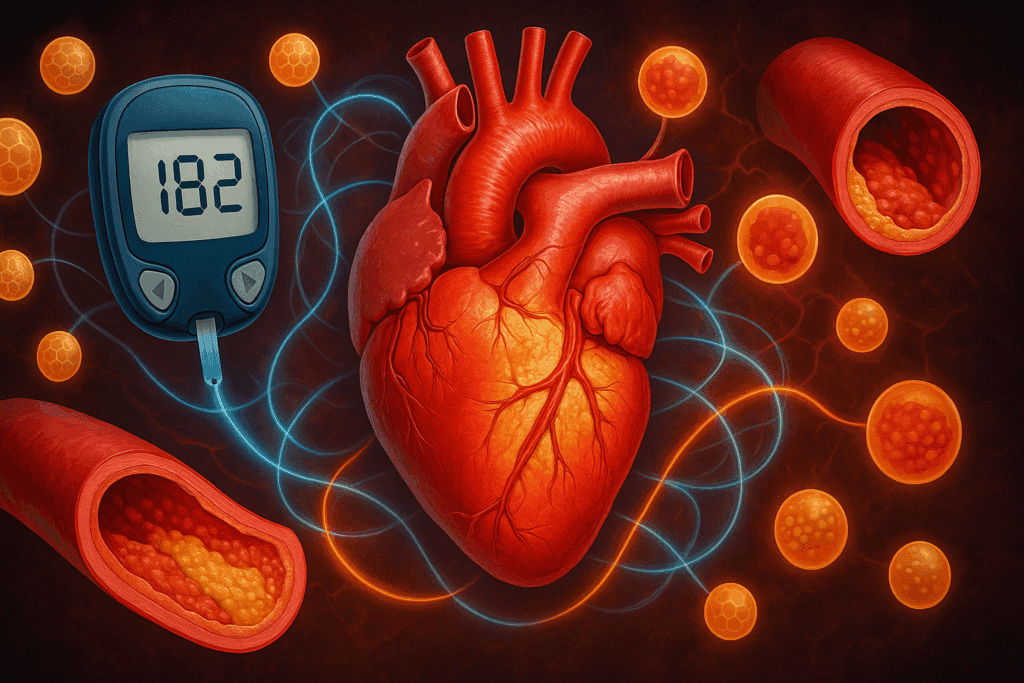
Diabetes and Cardiovascular Risk Are Deeply Connected
People with diabetes are at significantly increased risk for cardiovascular disease. In fact, cardiovascular complications are the leading cause of death in individuals with diabetes. Elevated blood sugar contributes to inflammation, endothelial dysfunction, and lipid abnormalities, all of which accelerate atherosclerosis. Even more concerning, cardiovascular risk can be elevated before diabetes is formally diagnosed, particularly in individuals with metabolic syndrome. The connection between blood glucose and heart health is so pronounced that many cardiologists now consider diabetes a “coronary heart disease equivalent.” For this reason, management plans must include lipid control, blood pressure regulation, and lifestyle modifications—not just glucose lowering. Understanding this link is essential for anyone looking for complete diabetes info and long-term risk reduction.
The Glycemic Index Isn’t Everything in Diet Planning
While the glycemic index (GI) of foods has long been emphasized in diabetes nutrition, newer research suggests that it shouldn’t be the sole consideration. The GI measures how quickly carbohydrates raise blood sugar, but it doesn’t account for portion sizes, nutrient composition, or the combined effect of mixed meals. A low-GI food consumed in large quantities can still spike blood sugar, while a high-GI food eaten with fat or fiber may have a tempered effect. Moreover, a diet focused exclusively on GI can neglect overall nutrition and sustainability. Personalized meal planning that considers total carbohydrate load, nutrient density, and individual response is now preferred. This nuanced approach to nutrition provides more flexibility and supports sustainable dietary habits.
Type 1 Diabetes Holistic Treatment Strategies Are Gaining Ground
For years, the standard treatment for type 1 diabetes has been insulin therapy. However, there’s growing interest in holistic treatment strategies that complement insulin use with lifestyle, nutrition, and stress management. These integrative approaches don’t replace insulin—essential for survival—but they aim to optimize quality of life and glycemic control. For example, evidence suggests that mindfulness practices, anti-inflammatory diets, and regular exercise can reduce blood sugar variability and enhance psychological well-being. Moreover, certain micronutrients like vitamin D and omega-3 fatty acids are being studied for their immune-modulating effects. While more research is needed, the move toward a more comprehensive model aligns with current trends in personalized medicine and has particular relevance for those exploring type 1 diabetes holistic treatment in depth.
Not All People with Obesity Develop Diabetes—And Not All with Diabetes Are Obese
Another myth that persists in the public consciousness is that obesity automatically leads to type 2 diabetes. While obesity is a major risk factor due to its relationship with insulin resistance, it is not the sole determinant. Many individuals with obesity never develop diabetes, while a significant number of people with type 2 diabetes have a normal body weight. This paradox highlights the interplay of genetics, fat distribution, muscle mass, and metabolic health. Visceral fat, which accumulates around the abdominal organs, appears to be more strongly associated with insulin resistance than subcutaneous fat. Thus, measuring waist circumference may be more informative than BMI alone. Recognizing this complexity helps combat stigma and promotes more nuanced diabetes info based on individual risk profiles.

Alternative Therapies Are Being Rigorously Studied for Type 2 Diabetes
As more people seek non-pharmaceutical approaches, alternative medicine for diabetes type 2 has become a focus of scientific inquiry. Herbs like berberine, fenugreek, and bitter melon are being studied for their glucose-lowering effects. Some have shown promising results in improving insulin sensitivity and reducing postprandial glucose spikes. Acupuncture, yoga, and traditional Chinese medicine are also undergoing clinical evaluation. However, not all alternative therapies are created equal, and some may interfere with conventional treatments or cause side effects. This underscores the importance of evidence-based evaluation and consultation with qualified healthcare providers. For individuals pursuing complementary approaches, science-backed guidance ensures both safety and efficacy.
Frequently Asked Questions: Deeper Insights into Diabetes Management and Myths
What role does sleep quality play in diabetes management, and why is it often overlooked?
Sleep disturbances are more than just a side effect of diabetes—they can actively contribute to worsening insulin resistance and glucose instability. Recent research suggests that poor sleep quality impairs glucose metabolism and increases cortisol levels, both of which can raise blood sugar. People with type 2 diabetes frequently report sleep disorders like obstructive sleep apnea, which remains underdiagnosed. What makes this one of the more interesting facts about diabetes is how something as simple as improved sleep hygiene may have measurable effects on long-term outcomes. Despite this, many people seeking diabetes info still focus only on food and medications, overlooking rest as a foundational pillar of metabolic health.
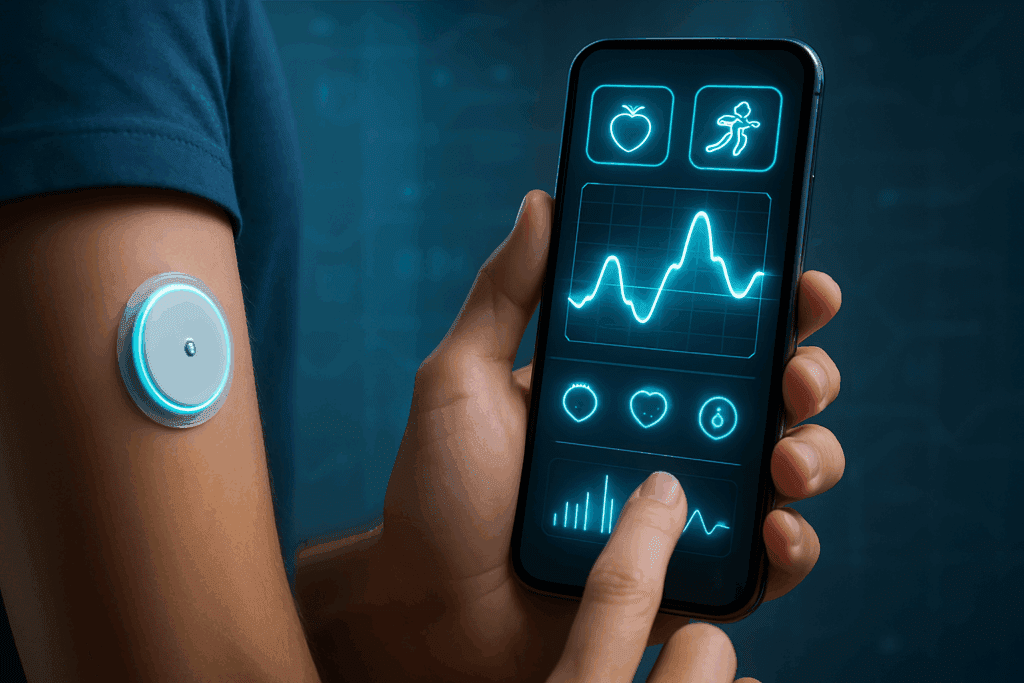
How can digital health tools personalize diabetes care beyond traditional blood sugar tracking?
Digital tools are transforming how we approach chronic disease management by offering real-time, individualized insights. Continuous glucose monitors (CGMs) not only track glucose fluctuations but now integrate with mobile apps that provide dietary feedback, stress alerts, and physical activity logs. This allows for a more nuanced understanding of how specific behaviors affect each person’s glucose response. One of the most underappreciated components among the 10 facts about diabetes is that two people can eat the same meal and experience drastically different glucose spikes. By using tech to fine-tune responses, patients can take more precise, data-driven actions—an advancement that enriches the quality of diabetes info available today.
Can stress management techniques meaningfully improve glycemic control?
Chronic stress activates the hypothalamic-pituitary-adrenal (HPA) axis, which triggers cortisol release and insulin resistance. While often addressed briefly in standard advice, emerging evidence supports the use of mindfulness-based interventions, yoga, and cognitive behavioral therapy (CBT) for glycemic improvement. These techniques not only stabilize blood sugar but also reduce diabetes-related distress—a critical factor often missing in conventional treatment plans. One of the more surprising and interesting facts about diabetes is that psychological stress can spike glucose levels as sharply as a sugary meal. For this reason, mental health support should be considered an essential component of any modern diabetes care plan.
What innovations are emerging in the field of non-invasive glucose monitoring?
Among the 10 facts about diabetes worth spotlighting is the growing demand for needle-free monitoring technologies. Researchers are developing wearable biosensors that use sweat, saliva, or interstitial fluid to estimate glucose levels without blood. These devices aim to make glucose monitoring less invasive, increasing adherence and enabling continuous insights without finger pricks. Although still in development or early clinical trials, these technologies represent a leap forward in patient-centered care. Those searching for diabetes info often overlook this rapidly evolving field, which may soon redefine how we monitor and manage the condition daily.
Why do some individuals with diabetes experience fluctuating blood sugar even with good habits?
Glycemic variability—sharp swings in blood sugar levels—can occur even with strict diet, exercise, and medication adherence. Factors such as hormonal changes, hydration status, and even ambient temperature can impact glucose levels. Some people metabolize carbohydrates differently due to gut microbiome variations, which is one of the lesser-known but important components in the 10 facts about diabetes that researchers are currently exploring. For these individuals, precision nutrition and personalized treatment plans may offer better control. Anyone navigating conflicting diabetes info should recognize that control isn’t just about consistency—it’s also about understanding your body’s unique patterns.
Are there environmental toxins that could play a role in diabetes risk?
Emerging research has linked certain endocrine-disrupting chemicals (EDCs), such as BPA and phthalates, to increased insulin resistance and beta-cell dysfunction. Found in plastics, food packaging, and household items, these toxins may influence metabolic health even at low doses over time. This angle is frequently absent from standard diabetes info, yet it adds another layer to disease prevention. Among the most forward-looking discussions in the broader conversation about 10 facts about diabetes is the role of environmental health. Reducing exposure to EDCs may complement traditional lifestyle changes and offer a more holistic prevention strategy.
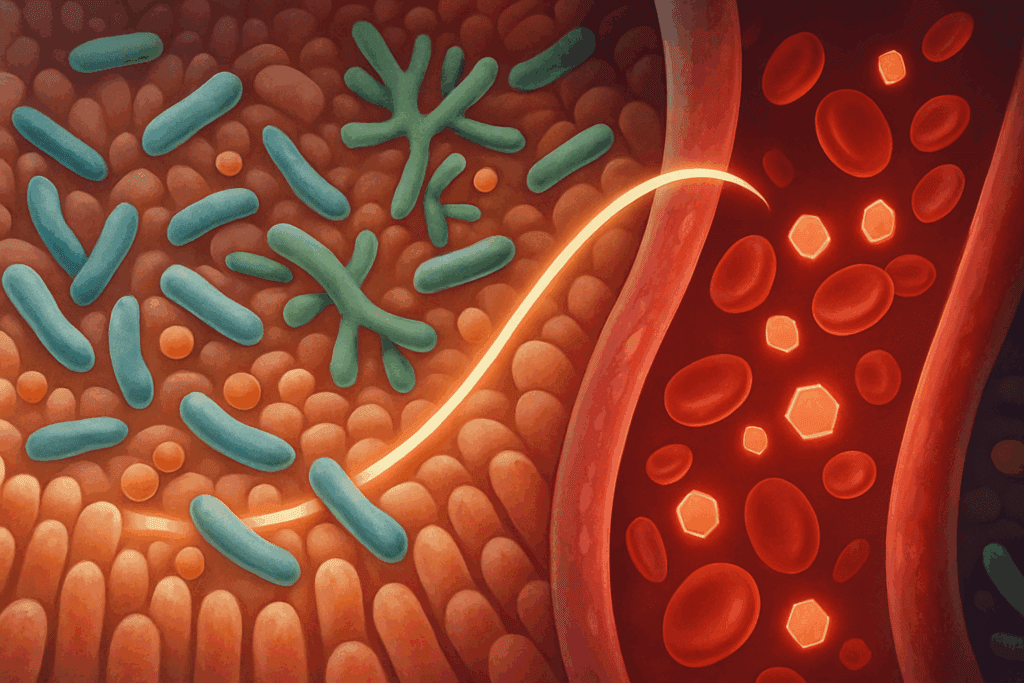
How does the gut microbiome influence diabetes development and control?
The gut microbiome—home to trillions of microorganisms—plays a critical role in metabolic health. Specific bacterial strains help regulate glucose metabolism, reduce inflammation, and even influence appetite and weight. Dysbiosis, or microbial imbalance, has been linked to insulin resistance and systemic inflammation. Probiotic and prebiotic interventions are being explored as adjunct therapies, although results vary by individual. Those seeking in-depth diabetes info should be aware that the gut’s influence extends far beyond digestion—making it one of the most biologically compelling and interesting facts about diabetes today.
What are the social and emotional impacts of a diabetes diagnosis that aren’t discussed enough?
Living with diabetes involves more than managing numbers; it often includes navigating stigma, anxiety, and social pressures. Many individuals report feelings of shame or isolation, particularly if they perceive their diagnosis as a personal failure. Support networks, whether through community groups or digital platforms, play a significant role in emotional resilience. One of the underrepresented yet crucial aspects among the 10 facts about diabetes is how emotional health influences treatment outcomes. Comprehensive diabetes info should include strategies for emotional coping and communication—not just physical management.
How do food timing and circadian rhythms affect blood sugar control?
Chrononutrition—the science of aligning eating patterns with circadian rhythms—is gaining recognition in diabetes research. Studies show that eating earlier in the day, when insulin sensitivity is highest, can lead to better glycemic control than consuming the same meals later. Nighttime eating disrupts melatonin and insulin cycles, potentially worsening glucose tolerance. This emerging insight expands the conventional focus on what you eat to also include when you eat. Those exploring interesting facts about diabetes should consider the importance of meal timing as a practical and effective strategy.
What’s the future of diabetes prevention at the population level?
The next frontier in diabetes prevention involves systemic change: improving access to healthy foods, redesigning urban environments to promote physical activity, and integrating diabetes education into schools and workplaces. Precision public health initiatives aim to combine genetics, lifestyle data, and geographic trends to predict and mitigate risk more efficiently. These evolving strategies reflect a broader understanding of diabetes as not only a medical condition but also a social and environmental issue. Readers seeking meaningful diabetes info must look beyond the individual to appreciate collective interventions. As we expand on the 10 facts about diabetes with a societal lens, prevention becomes a shared responsibility—shaped by science, policy, and culture.
Conclusion: Rethinking What We Know About Diabetes in Light of Emerging Evidence
As scientific understanding deepens, the story of diabetes continues to evolve. These 10 facts about diabetes underscore how much we’ve learned—and how much more there is to discover. From debunking common myths to expanding treatment possibilities, the latest research reshapes how we view this widespread condition. Whether examining early warning signs, holistic strategies for type 1 diabetes, or alternative medicine for diabetes type 2, a more nuanced, personalized approach to care is emerging. This evolution in perspective not only improves outcomes but empowers individuals with accurate, up-to-date diabetes info that reflects real-world complexity. For anyone seeking interesting facts about diabetes that go beyond surface-level knowledge, the message is clear: informed, science-based action is the most powerful tool in the fight against this modern epidemic.
Further Reading:
10 Myths and Facts about Diabetes
Dispelling 11 common myths – about diabetes
Disclaimer
The information contained in this article is provided for general informational purposes only and is not intended to serve as medical, legal, or professional advice. While MedNewsPedia strives to present accurate, up-to-date, and reliable content, no warranty or guarantee, expressed or implied, is made regarding the completeness, accuracy, or adequacy of the information provided. Readers are strongly advised to seek the guidance of a qualified healthcare provider or other relevant professionals before acting on any information contained in this article. MedNewsPedia, its authors, editors, and contributors expressly disclaim any liability for any damages, losses, or consequences arising directly or indirectly from the use, interpretation, or reliance on any information presented herein. The views and opinions expressed in this article are those of the author(s) and do not necessarily reflect the official policies or positions of MedNewsPedia.


